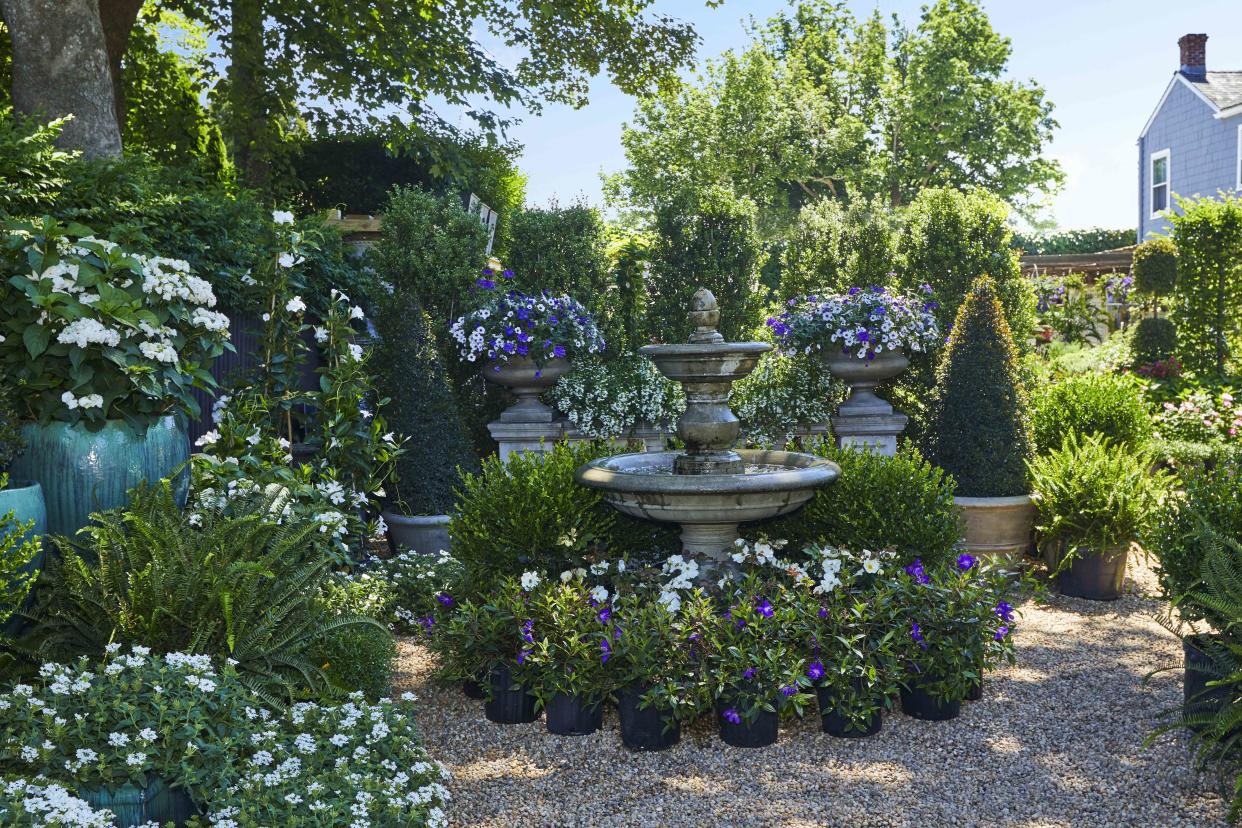6 Common Gardening Mistakes Pros Want You to Stop Making

Design by East Hampton Garden
As the gardening season quickly approaches, we spoke to experts to find out what common gardening mistakes people should avoid making at all costs and their best tips on what to do instead.
Here are 6 gardening mistakes to look out for so you can have a thriving garden.
Incorrectly Placing the Plants
Gardeners often skip planning their plants' placement which could lead to disappointing results. “We all want to squeeze as much as we can into the garden,” Fern Berg, the founder of Tree Vitalize, says.
You don’t want to plant a tree or vegetable without careful consideration for its final size. Berg explains how a pumpkin vine can quickly take over a small vegetable garden if not thoughtfully placed. And a tree planted too close to a house may become a problem later down the line.
Michael Giannelli of East Hampton Gardens agrees. “Overcrowding is a mistake,” he says.
Plants need room to grow and spread naturally. This is why before planting anything, you should check the plant tag (grown vegetables and flowers at your local nursery will have these). For trees, remember to check not only their maturity height and spread potential, but also if they have invasive roots, Berg suggests.
These tree types can be a bad candidate for planting near structures, like your house.
Not Utilizing Space
At the same time, some gardeners forget they can use unexpected areas of the garden, like growing plants on their garden fences.
“With vertical gardening, you can make great use of an empty stretch of wall or fence,” Berg says. This method of gardening is especially great for smaller gardens in urban areas.
Though vertical gardening might require extra tools or knowledge, it can help you maximize the garden space you do have. Berg recommends purchasing a vertical planter or making your own if you don’t have fences on which to grow plants.
Planting in the Wrong Climate
Not every garden plant will do great in your region.
“I used to mistakenly assume that if my local big-box garden center was selling it, I could pop it in the ground and watch it flourish,” Berg says. But this isn’t always the case, especially if your plant isn't heat tolerant.
To stop making this mistake, choose plants that are best for your climate. First, identify your USDA growing zone. Berg explains how these zones are developed by the United States Department of Agriculture which will help you determine the hardiness zones for every tree and flower.
When buying seeds, you can often find the info attached explaining their zone range. So, make sure to match your chosen plant with your area’s specific zone.
Overwatering With Sprinklers
Not watering your plants properly can lead to them either drowning because they were overwatered or being thirsty because they were underwatered, Teri Valenzuela, Natural Science Manager at Sunday Lawn Care, says.
This huge problem can lead to root rot and yellow leaves. In his experience, Giannelli noticed that many people tend to use irrigation systems for both their gardens and lawns. Although this is fine for the lawn, it's not great for everything else, Giannelli says. Every plant needs its own preferred amount of water.
But you can avoid making this mistake by manually watering with a hose. This will allow you to determine just how much or how little water to give each plant based on its personal special requirements.
Using the Wrong Sized Pot
If you’re growing your vegetables from seed, it’s easy to assume a smaller pot will always do. “Plus pots can get expensive and heavy, depending on what you're growing,” Dan Allen, a gardener and the CEO/co-founder of Farmscape, says.
But the right-sized pot is worth the investment, and it can make the difference between success and failure in a container garden.
“Smaller pots dry out quicker and provide less space for the plant to develop new roots as it matures,” Allen says.
Allen recommends using “the rules of thumb" to help pick out the right pot for your plant. Go for a range of 1" to 2" larger in diameter than the plant going inside. Although this may be applicable for a short-lived annual, it may not be the case for a new fruit tree you're planting. Always consult your local nursery professional to be on the safe side.
Not Testing Your Soil First
This is a mistake home gardeners make when they're overly eager to jump into planting. But before any plant goes into the ground, take a step back and test your soil, Bryan Clayton, a co-founder of GreenPal, says.
“Different plants need different things from their soil,” he says. While some plants need the soil to be more acidic, some prefer alkaline or other nutrients. “Skipping the soil test is like trying to bake a cake without knowing what ingredients you're missing,” Clayton says.
Luckily, you can buy a test kit to test for nutrients or pH balance from almost any local garden center. Test your soil and find out what plants will do great in it.
Read Next: How to Improve Garden Soil With Amendments
Read the original article on The Spruce.

